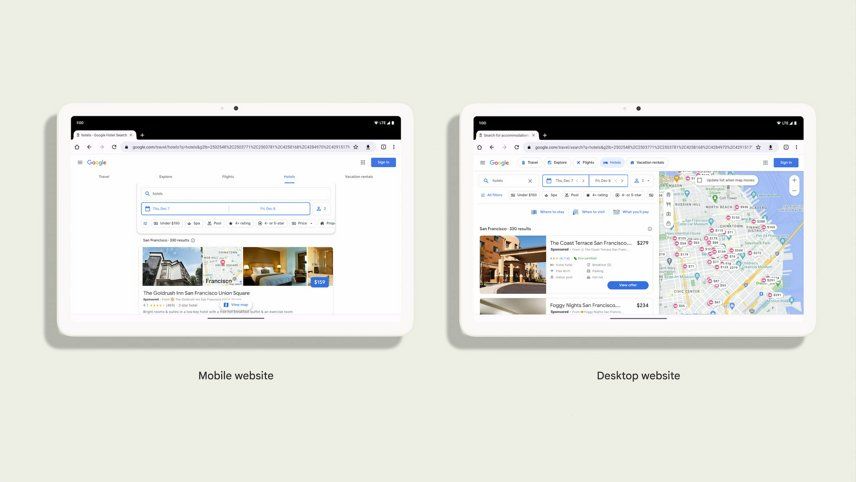Android on tablets is a generally worse encounter than any iPad, but Google has been slowly trying to change that. Google Chrome on Android tablets is now rolling out a significant improvement that will make it more appreciate desktop web browsing.
Google announced that the Chrome web browser will now use a desktop user agent string and properties on “premium tablets,” instead of the mobile user agent that was previously the default behavior. This will provoke sites checking the user agent string to show the desktop version, instead of the version intended for phones. The size of the window will also match your tablet’s screen, and not the previous viewport set at 980 pixels wide. Chrome on iPad is not affected.
Google’s definition for a premium tablet is a screen at least 10 inches and at least 8GB of RAM. That means smaller tablets, appreciate the Galaxy Tab A8 or Nokia T10, will continue to use mobile sites by default. You can stil switch into desktop mode manually with the toggle in the overflow (three dots) menu with Chrome on any Android device, including phones.
Google said in a blog post, “As the Android tablet ecosystem has seen more large and powerful devices become readily available, we’ve found that the desktop website can often be a better encounter than the mobile site. Mobile websites that were designed for small screens and low RAM don’t always take advantage of the large screen and other powerful device capabilities. Therefore, for premium tablets, desktop mode is now the default.”
Apple made the same change to Safari on iPad tablets in 2019, so it’s a bit strange that Google waited this long for Android tablets. The blog post mentions it’s happening because “more large and powerful devices become readily available,” but really all that’s changed is that Google released the Pixel Tablet. Samsung has been selling large Android tablets with premium hardware for years, most recently with the Tab S9 series, and Lenovo and Xiaomi have also released some high-end tablets. Better late than never, maybe?
Many websites using responsive design already show a desktop layout on tablets, but with this change, more sites should work without messign with the desktop mode toggle.
Source: Chrome for Developers Blog


